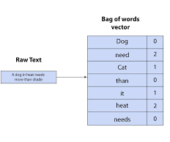A Generative Adversarial Network (GAN) is a type of machine learning model that consists of two neural networks, a generator and a discriminator, that compete in a “game” to generate realistic data samples. The generator tries to produce convincing fake data, while the discriminator tries to distinguish between real and generated data, leading to the generator improving its ability to create realistic data.
Here’s a more detailed explanation:
Key Components:
- Generator:This network takes random noise as input and learns to generate data samples that resemble the real data it’s trained on.
- Discriminator:This network is trained to distinguish between real data samples and generated samples from the generator.
- Adversarial Training:The generator and discriminator are trained simultaneously in an adversarial manner, where the generator tries to “fool” the discriminator by producing data that looks real, and the discriminator tries to correctly identify the generated data.
How it Works:
- Initialization: The generator and discriminator are initialized randomly.
- Training Loop:
- The generator receives random noise as input and generates a sample.
- The discriminator receives both real and generated samples and tries to classify them as real or fake.
- The generator and discriminator are then updated based on their performance in this classification task.
- The generator is trained to make the discriminator classify its output as real, while the discriminator is trained to correctly classify real and fake samples.
- Iteration: This process is repeated iteratively, with the generator and discriminator gradually improving their abilities to generate realistic data and distinguish it from real data, respectively.
Applications:
- Image generation: GANs can be used to generate realistic images, such as faces, objects, or scenes.
- Image-to-image translation: GANs can be used to translate images from one domain to another, such as converting photographs to paintings or images of horses to zebras.
- Super-resolution: GANs can be used to increase the resolution of low-resolution images.
- Text generation: GANs can be used to generate text, such as poems, articles, or code.
- Audio and speech synthesis: GANs can be used to generate synthetic audio and speech.
Challenges:
- Training instability: GANs can be notoriously difficult to train, and may not converge to a stable solution.
- Mode collapse: The generator may only learn to generate a limited set of data samples, even if trained on a diverse dataset.
- Computational cost: Training GANs can be computationally expensive and time-consuming.
Content updated March 2025.













